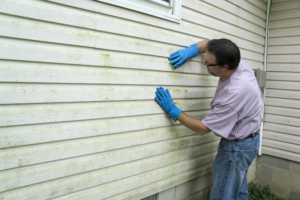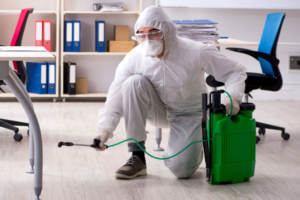Sports Massage Tulsa is a specialized form of massage therapy designed to enhance athletic performance, aid in recovery, and prevent injuries. It focuses on the muscles and soft tissues used in physical activities, targeting areas of tension and strain to promote relaxation and improved function.

This type of massage is tailored to the needs of athletes and individuals who engage in regular physical exercise, addressing specific muscle groups that experience stress from repetitive movements and intense training. Sports massage helps to increase blood circulation, reduce muscle soreness, and improve flexibility, making it an essential part of any athlete’s training and recovery program.
One of the primary benefits of sports massage is its ability to enhance athletic performance. By improving blood flow to the muscles, sports massage ensures that oxygen and nutrients are delivered efficiently, which supports muscle strength and endurance. Enhanced circulation also helps remove metabolic waste products such as lactic acid, which can accumulate during intense physical activity and cause muscle fatigue. This increased blood flow helps to keep muscles in optimal condition, allowing athletes to train harder and perform better. Improved flexibility and range of motion are also direct benefits of sports massage, as tight muscles and connective tissues are relaxed and stretched during the session. This increased flexibility reduces the risk of injury and enhances overall athletic ability.
Sports massage is also highly effective in preventing and managing injuries. Overuse of certain muscle groups can lead to muscle imbalances, tightness, and joint stress, which increase the likelihood of injury. By identifying and addressing areas of muscle tension and weakness, sports massage helps to restore balance and prevent the development of chronic issues. Techniques such as deep tissue massage, myofascial release, and trigger point therapy are used to break down adhesions and scar tissue, improving muscle function and reducing the risk of strain. Regular sports massage sessions help athletes maintain proper muscle alignment and balance, which reduces the risk of injury and supports long-term physical health.
Recovery is another key area where sports massage proves beneficial. After intense physical activity, muscles often become tight and inflamed due to the buildup of waste products and micro-tears in muscle fibers. Sports massage helps to flush out these waste products and promote the healing process by increasing circulation and lymphatic drainage. The application of pressure and stretching techniques helps to relax muscles and reduce inflammation, allowing athletes to recover more quickly and return to training with less discomfort. Reducing post-exercise muscle soreness through massage also helps to improve overall training consistency and prevent setbacks caused by prolonged recovery times.
The mental benefits of sports massage are equally significant. Physical activity and competition can place a great deal of mental stress on athletes, leading to tension and anxiety. Sports massage promotes relaxation by stimulating the parasympathetic nervous system, which helps to reduce stress hormones such as cortisol. The release of endorphins during the massage creates a sense of calm and well-being, improving mental focus and concentration. Athletes who receive regular sports massage often report feeling more confident and mentally prepared for competition, as the reduction in physical and mental stress enhances overall performance.
There are several techniques used in sports massage, each designed to target specific issues and muscle groups. Effleurage is a gentle stroking technique used to warm up the muscles and improve circulation. This technique helps to prepare the muscles for deeper work and relaxes the nervous system. Petrissage involves kneading and compressing the muscles to release tension and improve flexibility. This technique helps to stretch and elongate muscle fibers, reducing tightness and improving muscle function. Friction is a more intense technique used to break down adhesions and scar tissue within the muscle. This technique increases blood flow to the affected area and promotes healing of damaged muscle fibers.
Deep tissue massage is a common component of sports massage, focusing on the deeper layers of muscle and connective tissue. It involves slow, firm pressure and deep strokes to release chronic muscle tension and improve overall muscle health. Trigger point therapy targets specific points of muscle tension that can cause referred pain in other areas of the body. By applying sustained pressure to these points, sports massage helps to release muscle knots and restore normal muscle function. Stretching is also integrated into sports massage sessions to improve flexibility and range of motion. Assisted stretching techniques help to elongate muscle fibers and increase joint mobility, reducing the risk of injury and improving athletic performance.
Sports massage is often tailored to the specific needs of the athlete and the type of sport or physical activity involved. Different sports place unique demands on the body, resulting in varying patterns of muscle use and strain. For example, runners often experience tightness in the calves, hamstrings, and hip flexors, while swimmers may develop tension in the shoulders and upper back. A skilled sports massage therapist will assess the athlete’s movement patterns and muscle condition to develop a customized treatment plan. This targeted approach ensures that the athlete receives the most effective care for their specific needs.
The timing of sports massage sessions also plays a crucial role in maximizing its benefits. Pre-event sports massage is designed to prepare the muscles for competition by increasing circulation and flexibility while reducing muscle tension. This type of massage is typically shorter and more stimulating, focusing on quick, rhythmic strokes to activate the muscles. Post-event sports massage focuses on recovery by reducing muscle soreness and promoting relaxation. This type of massage involves slower, deeper strokes and stretching to help flush out waste products and restore muscle balance. Maintenance sports massage is performed regularly during training cycles to keep the muscles in optimal condition and prevent the buildup of tension and tightness.
Athletes and active individuals who incorporate sports massage into their training and recovery routines often experience improved overall physical health and performance. Regular sports massage helps to maintain muscle balance, reduce the risk of overuse injuries, and improve overall muscle function. The increased circulation and flexibility gained through sports massage contribute to better athletic performance and faster recovery times. Sports massage also helps to identify and address minor muscle issues before they develop into more serious problems, allowing athletes to train consistently and perform at their best.
Sports massage is also beneficial for non-athletes who experience muscle tension and stress from daily activities. Sitting for long periods, poor posture, and repetitive movements can create muscle imbalances and discomfort. Sports massage helps to release muscle tension, improve posture, and restore balance to the body. Individuals who experience chronic pain or muscle stiffness often find relief through regular sports massage sessions. The combination of physical and mental benefits makes sports massage a valuable tool for improving overall health and well-being.
The popularity of sports massage continues to grow as more people recognize its benefits for both athletic and everyday activities. The ability to customize the treatment to the individual’s needs ensures that sports massage remains effective and relevant for a wide range of physical conditions and activity levels. The use of specialized techniques and targeted care allows sports massage therapists to address specific muscle issues and promote long-term physical health. Athletes and active individuals who receive regular sports massage often experience improved performance, reduced injury risk, and enhanced overall well-being. The combination of physical, mental, and emotional benefits makes sports massage a highly effective and valuable form of therapy for maintaining peak performance and optimal health.








